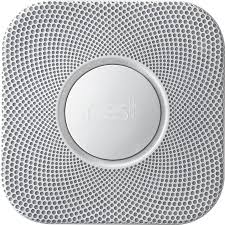The Importance of Nest Detectors in Home Safety
When it comes to keeping our homes safe, one essential device that often goes overlooked is the nest detector. Nest detectors play a crucial role in alerting us to potential dangers such as fires, smoke, and carbon monoxide.
These devices are designed to detect changes in the environment and sound an alarm to warn occupants of a possible threat. By providing early detection, nest detectors give people the precious time needed to evacuate safely and seek help.
One of the key benefits of nest detectors is their ability to detect carbon monoxide, a silent killer that is colourless and odourless. Carbon monoxide poisoning can be fatal, making it imperative to have a working detector in your home.
In addition to carbon monoxide detection, nest detectors also alert us to smoke and fire hazards. In the event of a fire, every second counts, and having a reliable detector can make all the difference in ensuring your family’s safety.
It’s important to install nest detectors in key areas of your home, such as bedrooms, living rooms, kitchens, and hallways. Regularly testing and maintaining these devices is crucial to ensure they are functioning correctly when needed.
Remember, investing in nest detectors is investing in your family’s safety and peace of mind. Don’t wait until it’s too late – make sure you have working nest detectors installed in your home today.
Essential FAQs About Nest Detectors: Installation, Functionality, and Maintenance
- 1. How does a nest detector work?
- 2. Where should I install nest detectors in my home?
- 3. What is the difference between a smoke detector and a carbon monoxide detector?
- 4. How often should I test my nest detectors?
- 5. What should I do if my nest detector goes off?
- 6. Are nest detectors easy to install?
1. How does a nest detector work?
A nest detector works by continuously monitoring the air for any signs of smoke, fire, or carbon monoxide. When it detects abnormal levels of these substances, the detector triggers an alarm to alert occupants of potential danger. Different types of nest detectors use various technologies such as ionization, photoelectric, or combination sensors to detect different types of threats. These detectors are designed to provide early warning and help prevent tragedies by giving people the time needed to respond appropriately and evacuate safely in case of an emergency. Regular testing and maintenance are essential to ensure that a nest detector is functioning correctly and providing reliable protection for your home and loved ones.
2. Where should I install nest detectors in my home?
When considering where to install nest detectors in your home, it is essential to strategically place them in key areas to maximize their effectiveness. It is recommended to install nest detectors in every bedroom, living room, kitchen, and hallway on each level of your home. Bedrooms are crucial as they are where people spend a significant amount of time sleeping. Living rooms and kitchens are high-traffic areas where potential fire hazards may arise. Hallways serve as escape routes during emergencies, making them important locations for nest detectors. By placing detectors in these strategic locations, you can ensure comprehensive coverage and early detection of any potential threats to your safety and well-being.
3. What is the difference between a smoke detector and a carbon monoxide detector?
When it comes to home safety, understanding the difference between a smoke detector and a carbon monoxide detector is crucial. A smoke detector is designed to detect the presence of smoke, indicating a potential fire hazard. On the other hand, a carbon monoxide detector is specifically engineered to detect the presence of carbon monoxide gas, which is colourless and odourless. While smoke detectors alert occupants to fires, carbon monoxide detectors warn against the silent threat of carbon monoxide poisoning. Both devices play distinct yet vital roles in safeguarding homes and occupants from different types of hazards.
4. How often should I test my nest detectors?
Regular testing of your nest detectors is crucial to ensure they are functioning effectively and providing the necessary protection for your home and family. It is recommended to test your nest detectors at least once a month to verify that the alarms are working correctly and the batteries are still operational. Additionally, it is advised to follow the manufacturer’s instructions for specific testing procedures and maintenance recommendations to keep your nest detectors in optimal working condition. By making testing a regular part of your home safety routine, you can have peace of mind knowing that your nest detectors are ready to alert you to any potential dangers promptly.
5. What should I do if my nest detector goes off?
If your nest detector goes off, it is crucial to act quickly and calmly. Firstly, do not ignore the alarm or assume it is a false alarm. Evacuate the premises immediately and ensure that everyone in the household is safe. Call emergency services such as the fire department if you suspect a fire or carbon monoxide leak. If it is a false alarm, ventilate the area by opening windows and doors, and carefully inspect the detector for any issues. Remember, your safety is paramount, so always take any alarm seriously and follow appropriate safety protocols.
6. Are nest detectors easy to install?
When it comes to installing nest detectors, many people find them relatively easy to set up in their homes. Most nest detectors are designed for simple installation, often requiring just a few basic steps to get them up and running. With clear instructions provided by the manufacturer and user-friendly features, even those with minimal DIY experience can successfully install nest detectors in their living spaces. However, it’s always recommended to follow the specific guidelines outlined in the product manual to ensure proper installation and optimal performance of the detector.

